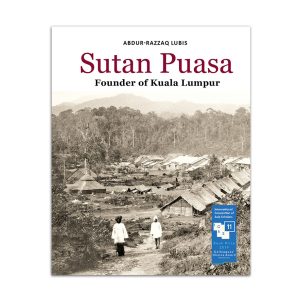The Chettiar Role in Malaysia’s Economic History seeks to evaluate the extent to which Chettiars were instrumental in the economic development of Malaya during British rule. Since the formation of the Federated Malay States in 1896 until Malaya gained its independence, the Chettiars emerged as one of the major financiers in the economic development of Malaya through their role in helping the Malays, Chinese and Indians to progress in the economic sector. However, the Chettiar role affected each of the three races differently, depending on factors such as the economic position of the respective races and British policy.
This book is essential in assessing the Chettiar role in the economic development of Malaya especially when the British failed to provide sufficient capital aid for local and foreign capitalists comprising the Malays, Chinese and Indians to develop the economic infrastructure and commercial economic activities such as rubber and tin mining. This book also highlights the role of the Chettiar, from indigenous money lenders to individuals who have been successful in various professions and are actively contributing toward the economic development of modern Malaysia.
Many Malaysians remember a time when ‘Chettiar’ conjured the image of an Indian man in a white cotton veshti carrying a black umbrella. (From our newsletter)
There are seven chapters in this book:
- Origins of Chettiar Community in Malaysia: traces the origins of the Chettiar community and their role in Malaya from the 15th century to Malayan independence
- Money Lending Activities of the Chettiar in Malaya. This chapter focuses on the scope, operation and importance of money lending activities as well as factors that have influenced these activities in various phases of Chettiar money lending activities from the 19th to 20th centuries.
- Chettiar’s Role in the Economic Development of the Malays explores the role played by the Chettiars in the economic development of the Malays.
- Chettiar’s Role in the Economic Development of the Chinese looks at the role of Chettiars in aiding the economic progress of the Chinese in Malaya. Most of the existing research on the history of the Chinese in Malaya records their economic success in the tin mining industry but their credit assistance from the Chettiars has never been highlighted.
- Chettiar’s Role in the Economic Development of the Indians explores the role of Chettiars in the economic development of the Indians comprised of labourers in the estates and urban areas, businessmen, as well as civil servants.
- Changing Roles of the Chettiars from 1941 to the Present Day discusses the exclusive role of Chettiars prior to independence and how they adapted to changing circumstances after independence up to the present day.
- Conclusion
Editorial reviews
This meticulously researched book represents a noteworthy contribution to our understanding of the ‘subaltern’ economy of Malaysia during the colonial period and to our appreciation of the changing role of the Chettiar in modern times. Chettiar prominence as creditors to Malay peasants is well known, but the authors show here that connections extended deep into Malay society, from royal families to civil servants. While pre-war links to plantation workers and support for Indian business were only weakly developed, Chettiar investment in larger Chinese enterprises was a significant factor in supporting the activities of local Chinese entrepreneurs. In this sense, the authors argue, the Chettiar helped lay the basis for Malaysia’s later economic development, while their contemporary commitment to nation building is demonstrated in their involvement in social welfare and concern for the well-being of their fellow Indians. The Chettiar Role in Malaysla’s Economic History will be welcomed not only by historians of Malaysia, but by all scholars involved with the complex narratives of Indian migration. Barbara Watson Andaya, Professor of Asian Studies, University of Hawai’i
Chettiars have been central to the financial economy in India and in the British Colonies in particular in Malaya and Burma. Authors of this book compares Chettiars‘ financial activities against the perspective of British colonial policies on land and property accumulation, their financing of Chinese capitalists as well as the Malay peasants and the Malay rulers. Both authors convincingly construct a theoretical paradigm where Chettiars formulated local finances in unfamiliar and familiar abodes in the Empire, connecting different races and capitalists within a successful capitalist modernization and transformation at both rural and urban levels. Chettiars global ventures were central to South East Asian economic modernization. The authors apply exceptional skills in research, both empirical and theoretical. Their unrivalled knowledge of the history of the Malaysian Indians is now captured in this scholarship on a powerful money lending caste impacting on global Indian trade, migration and investment. Raj Brown, Emeritus Professor in International Business Royal Holloway College, Egham, Surrey, UK











